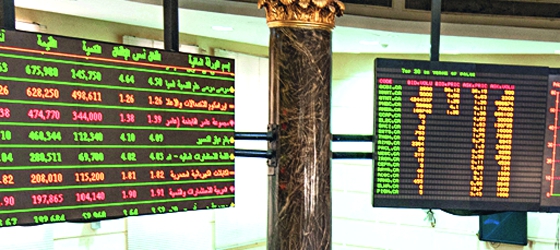More details have emerged regarding Egypt’s ambitious program of economic reform, as the country remains on course to receive the next allocation of a $12bn loan from the IMF to support its efforts.
On January 18 the IMF mission chief for Egypt, Chris Jarvis, told a news conference that the country was set to receive the $1.25bn second tranche of its three-year loan from the fund, pending a review planned for the end of February.
“Although [economic indicators] for December have not been published yet, early indications are that the benchmarks for the next tranche of the loan are likely to be met,” Jarvis said.
The IMF released the first tranche of $2.75bn immediately after approving the loan in November; however, details of the agreement and an expected reform timetable were not made available at that time.
Reforms required
Jarvis’ comments came at the release of the IMF staff report on Egypt’s request for the extended fund facility (EFF), which outlines in full the aims of the development program.
According to the document, the loan instalments are contingent on the government acting to tighten Egypt’s fiscal position, improve the business environment and liberalize the economy.
To this end the government has promised to ease capital controls by June, scrapping a $50,000 limit on non-priority imports and a $100,000 cap on the transfer of money abroad by individuals.
The move to impose a ceiling on transactions had originally been undertaken to curb an unregulated parallel exchange system that had arisen following the political turbulence of 2011. With dollar demand eventually outstripping supply by the end of 2013, businesses were resorting to the black market to access dollars.
The IMF loan was also contingent on Egypt enacting a more flexible exchange rate. The Central Bank of Egypt (CBE) responded by floating its currency in early November to bring foreign capital back to the country and return foreign currency trading to the formal banking sector.
The CBE had held the pound steady at LE8.80:$1 from March; however, the local currency quickly lost half its value against the dollar after the devaluation, reaching a low of LE19.64:$1 on December 20.
This month Jarvis said that the Egyptian pound had reached a “genuine equilibrium exchange rate”, even though it had dropped by more than expected following the currency’s flotation.
Tighter monetary policy is expected to help the CBE meet the IMF’s 7% inflation target by the end of the IMF program, with inflation projected to ease in the second half of the year. The CBE has pledged to move towards an inflation-targeting monetary policy as opposed to its current exchange rate-based model. The shift is timely, as annualized core inflation jumped above 25% in December, driven in large part by devaluation of the pound.
Early progress
In addition to the CBE’s adoption of a flexible exchange rate regime, other critical reforms were undertaken before the EFF was authorized last year.
In mid-2016 the government approved the introduction of a value-added tax, set at 13% in FY 2016/17 and rising to 14% in FY 2017/18. As highlighted in the IMF staff report, such moves should help increase tax revenues by 2.5% over the course of the program.
A fuel price hike of 50% was also enacted in early November to help reduce public outlays by the 3.5% targeted under the strategy.
This dovetails with the government’s aim of lowering the fiscal deficit from an estimated 10.1% of GDP in FY 2016/17 to 8.5% the following year, Amr El Garhy, minister of finance, highlighted earlier this month. Public debt, meanwhile, is projected to ease from 93.8% to 89.1% of GDP over the same period.
Foreign inflows
The conditions attached to the loan and signs that reforms are taking shape have helped to boost investor confidence in Egypt.
“The IMF loan has already shown its importance through the increased dollar inflows that followed on the heels of the deal,” Karim Kamel, vice president for consumer goods company P&G, told OBG. “While the $12bn will increase investors’ confidence, the more significant impact will come from the government’s implementation of the associated reforms.”
Even before the IMF deal, following the pound’s devaluation, Egypt secured $2bn worth of funding from international banks in the form of dollar-denominated bonds. This saw Egypt’s blue chip index rise by 4.5%, with market data showing a surge of activity from foreign investors.
Speaking to media earlier this month El Garhy said the government expected foreigners to purchase up to $11bn in T-bills and T-bonds and stocks in the coming period.
Oxford Business Group
3 February























































